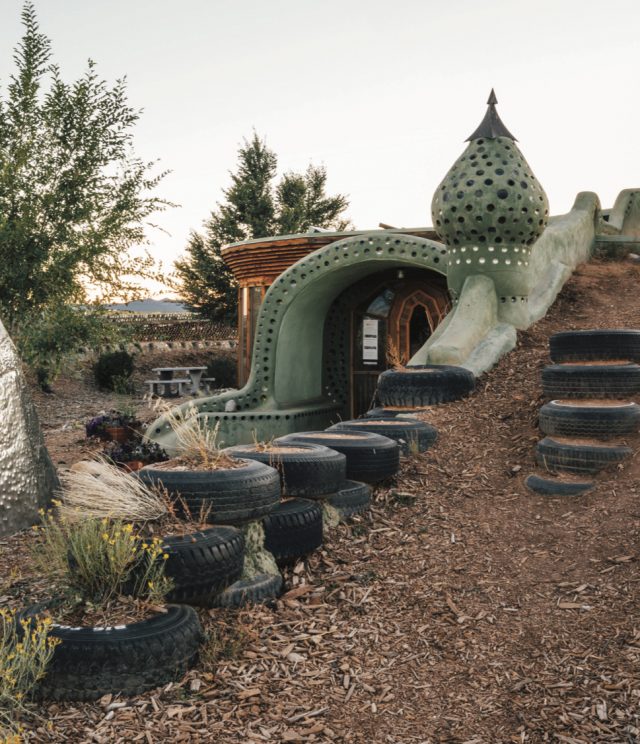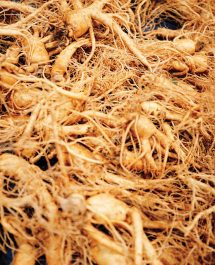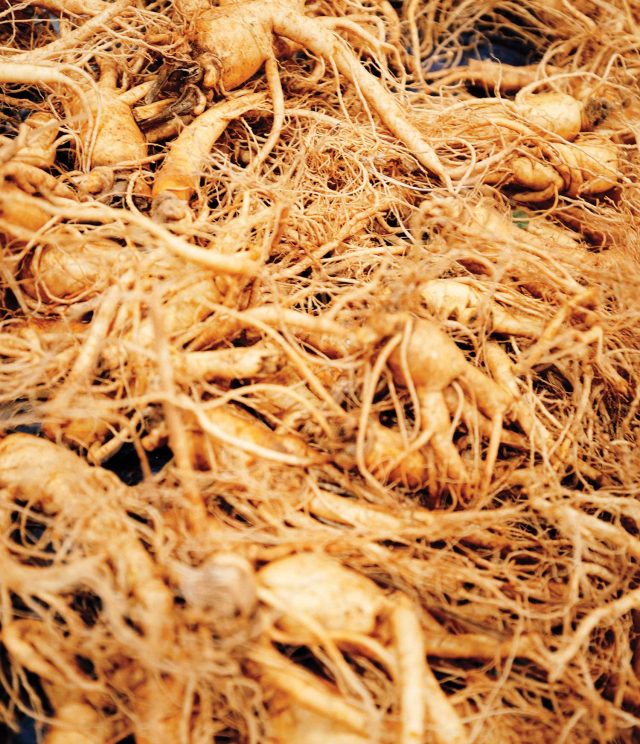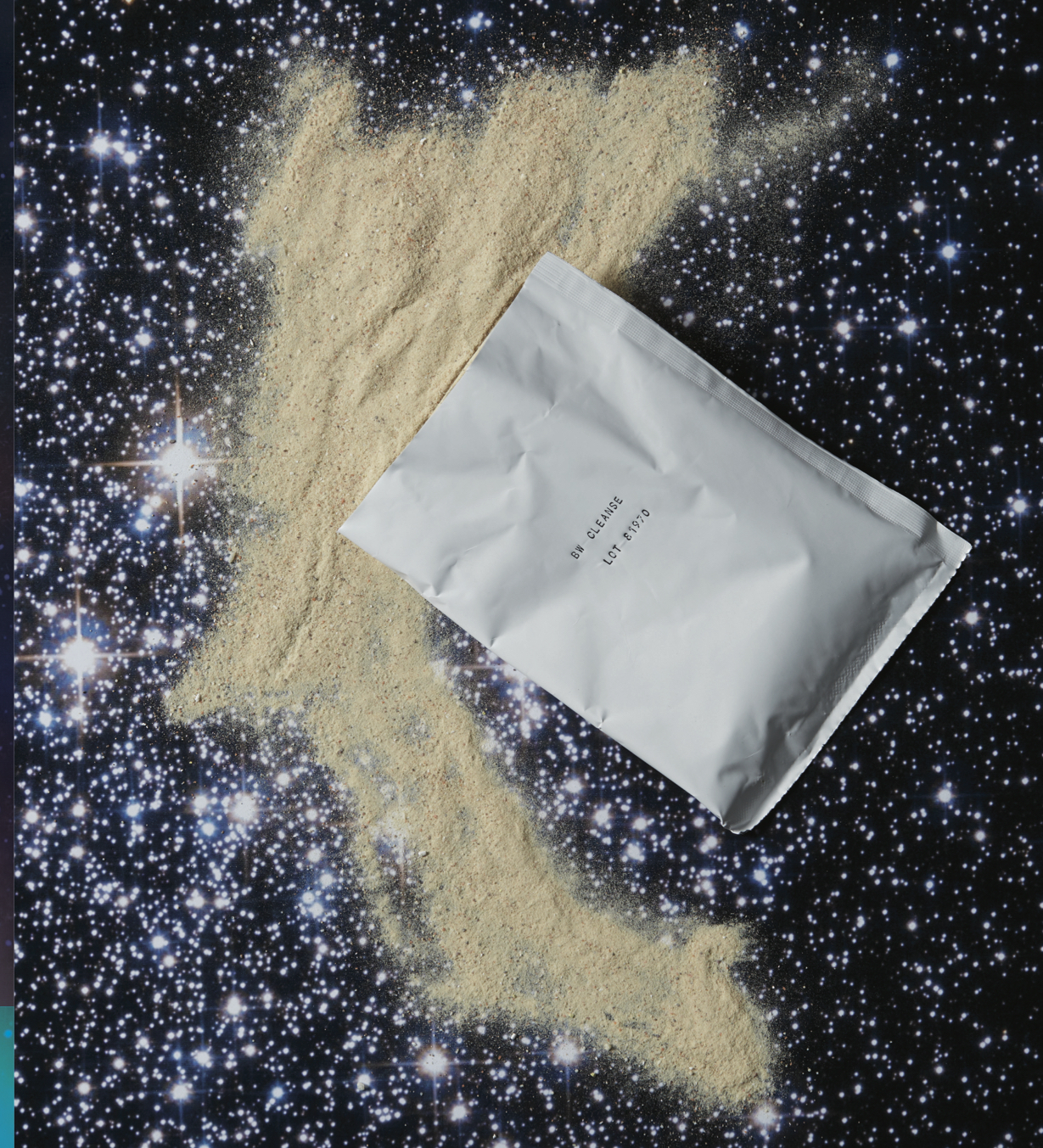
STORY BY STACIE STUKIN PHOTOGRAPHS BY DAVID ENGELHARDT
These are trying times. No matter what your politics, it’s chaos out there. A whiplash-worthy, lightning-speed news cycle, the threat of climate change, and the phone that’s attached to your hand can really stress you out. Enter coping mechanisms. Mine involve tequila and cake. After all, tequila has probiotics. (Never mind the Snopes disavowal—I’m sticking with it, preferably with grapefruit juice.) And waking up on a weekend to bake something infused with love and sugar is akin to the best psychotherapy around. But toward the end of the year, my imbibing (and baking) had gotten a little mindless. Cake, tequila, and carbs were no longer the triumphant triumvirate I wished them to be.
So when offered an opportunity to do a 14-day cleanse, I said yes hoping to get my diet back on track after the holiday madness. The Be Well Cleanse, an anti-inflammatory diet designed by New York-based integrative M.D. Dr. Frank Lipman, was pretty hassle free. I got a list of foods to embrace and eliminate, recipes, fiber-rich plant-protein packets to make shakes, and supplements, all designed to eliminate bad gut bacteria. As Dr. Lipman told me, “Because most people are indulging in too much of the wrong thing, the idea of the cleanse is to push the reset button and push you into healthy living.”
Similar to the high-fat, low-carb Whole 30 diet, the rules are simple. Cut out booze, dairy, sugar, carbs, most fruits, grains, and legumes. Eat lots of healthy fats like nuts, ghee, avocado, and coconut oil, non-starchy vegetables, fish (preferably wild caught), and grass-fed, pasture-raised meats. I also get access to a Be Well Health & Wellness coach named Katie Ulrich, who tells me I’m allowed one cup of coffee a day, which is music to my ears. I’ll admit I was nervous—afternoon potato chip and dark chocolate habit be gone—but the prospect of oodles of energy, a sharp mind, clear skin, and possibly losing the love handles I thought I had made peace with, was motivation enough. Here’s what happened.
• • •
Days One, Two, and Three
Equipped with a very long grocery list, I head to the natural foods store and pile my cart high with grass-fed ghee (clari- fied butter), hemp seeds, cacao nibs and powder (the closest I will get to chocolate), berries, apples, grapefruit, grass-fed beef, organic chicken, and lots of nuts, seeds, and vegetables galore. I tossed in greens, cauliflower, broccoli, butternut squash, beets, and avocado, too. Upon checkout, I realize I already blew my food budget for the two weeks. It seems eating clean is expensive. Maybe I shouldn’t have splurged on that $20 jar of artisanal coconut-milk yogurt, but Katie suggests the yogurt as a high-fat, probiotic treat to boost good gut bacteria. It’s almost like dessert, especially when enhanced with berries and cacao powder.
The plan suggests a shake for breakfast, but Katie tells me it’s not mandatory. She explains the diet is designed to be flexible and accommodate your needs so you never feel deprived. So if I prefer my morning food and coffee ritual, it’s okay with her. I put a heaping teaspoon of ghee in my double espresso and add steamed coconut milk. I’m hooked on this brew, which is designed to deliver a high dose of healthy, hunger-busting fats that energize and feed your brain. The butter is silky, filling, and verges on decadent. Grapefruit and berries topped with that expensive coconut-milk yogurt is swell, especially when sprinkled with chocolatey cacao nibs. I can get used to this, I think.
For lunch I put sliced cucumber, kimchi, and sardines in a bowl—a working lunch that requires assembly only. After an hour or so at the computer, I’m hungry. Time for the shake. I add water and put it in a blender. It tastes dreadful—like vanilla chalk infused with stevia. Even Katie admits she doesn’t love the shakes, so I try again using her suggestion to substitute almond milk for water and add cacao powder and almond butter. Now it’s tolerable but it’s not something I sip. I chug it down like medicine. I eye half a persimmon my husband left on the counter at breakfast. I eat it. I’m weak. I cheat.
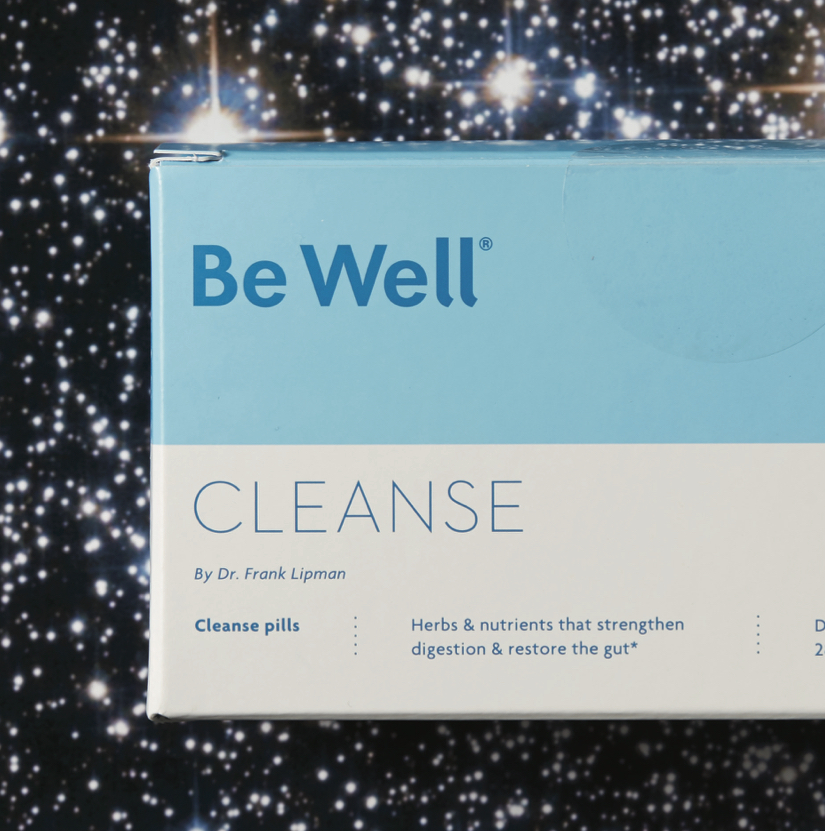
I recalibrate, feeling bloated from the fiber-filled shake and try to get some writing done. Instead, I procrastinate and plan dinner that will fit the plan, which prescribes a plate that is 70- to 80-percent vegetables accompanied by quality protein and fats. So I make a hearty hot borscht soup for later. Using store-bought, collagen-rich bone broth as a base, I fill it with beet greens and chard. I decide we’ll have the soup, some grass-fed bison burgers, and a big spinach salad with avocado for dinner.
These first days come and go much the same—an afternoon starving sensation, a shake chug, a bloated feeling, and a chocolate craving. But I soldier on. I eat baked chicken thighs, wild salmon and shrimp, steamed green beans. I make a huge pot of cauliflower soup. I precut vegetables for salads and to steam. I find solace in cassava flour tortillas with melted ghee, avocado, and arugula. And I get a huge pimple. I stare at the adolescent-size boil on my chin and wonder, is this good? Yes, I decide. I’m detoxing and there’s a cyst on my face to prove it. Fortunately, I have nowhere to go and even if I did I couldn’t because I have a headache that won’t go away, which I accept at this stage because Katie warned me that the first few days will be the hardest due to sugar withdrawal.
• • •
Days Four, Five, and Six
It’s the weekend and all I can think is, “I want candy.” But then a shift happens. The sugar cravings go away. And when I meet some friends for coffee and order a cup of chai tea, I take a sip and push it away. It’s presweetened and it’s so sickly sugary I can’t even drink it. But I feel dizzy and my head is still pounding. A friend offers me some bacon and even though I rarely eat pork, it’s clear the almond butter and apple snacks aren’t cutting it. I ravenously eat three slices.
I find the amount of animal protein I’m eating unsettling. I’m an omnivore but I go days without eating meat and I often make vegan meals at home. Now I am eating meat at least twice a day. But my allergies have abated as has my Claritin intake. It’s hard to know if it’s the diet—I always suspected dairy might be the culprit of my sinus congestion. But it also might be the winter weather. Either way, I’ll take it.
When I’m faced with a friend’s birthday party, the social ramifications of the diet surface. Usually, I’d jump at the opportunity to make a cake. But I’m feeling so crappy that I don’t even offer. Then more guilt surfaces when it’s time to leave and I tell my husband, I’m not going. I’m so tired and achy that I can’t move off the couch. All I want to do is take an Epsom-salt bath and watch Marie Kondo tidy up on Netflix. And that’s exactly what I do. The sugar cravings remain abated, which is a good thing.
• • •
Days Six, Seven, and Eight
I am not sleeping well. It’s hard to know if this agitation is caused by an inbox full of annoying emails demanding things I don’t want to do—re-entry into reality after the holiday—or if it has something to do with the diet. I still have a headache, I feel jittery and unfocused. I am doing all that is asked of me. Sticking to the diet isn’t the problem. I rediscover how much I love sauerkraut (probiotics, people) and I enjoy cooking and eating lots
of vegetables. I’m particularly pleased with Japanese yams, especially when smothered in ghee with a little garam masala sprinkled on top. They are
a sweet, savory and satisfying side dish that could almost pass for dessert. And they add variety and a new texture to my staple of meat and lots of vegetables.
I begin to wonder if the supplements have anything to do with my discomfort. So, I decide to stop taking them. Within 24 hours the speedy feeling goes away. I ask Dr. Lipman and he confirms that the headache and jittery feeling are usually a sign of sugar withdrawal, but they should have subsided around day three or four. “It sounds like you’re having a reaction to the anti-microbial herbs in the supplements. It happens but it’s unusual,” he explains. “Everyone is different, there is no one body type so I tried to design a program that works for the majority of people.”
There’s a reason my husband calls me Petal. I am a particular, sensitive woman but I am also relieved that eliminating the supplements enable me to sustain this diet.
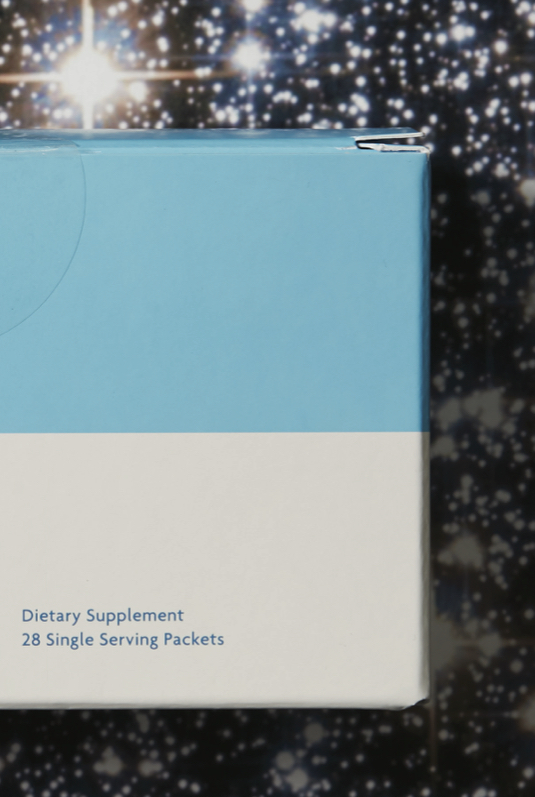
• • •
Days Nine through Fourteen
I’m more than halfway through my cleanse and for the first time I wake up without a headache. Oh joy. I look in the mirror and notice my eyes are bright and the puffiness is gone. Fantasies (self-critical musings) that I need an eye job are abated for now and my pants feel a bit loose around the waist.
I still haven’t found the energy or the will to exercise but the Be Well Cleanse encourages you to listen to your body and honor its message. Mine is saying rest and eat more. Once I accept this reality, I find that I’m able to forego exercise and reboot my meditation practice. I’m also beginning to like my diet and find it easy to say no to tequila when I meet friends for a drink. Instead, I sip mineral water, order some vegetable soup, and feel bad that I cheated earlier in the day by eating an orange and two dates. Then I get a grip. It’s not like I ate a whole pie and washed it down with a bottle of champagne. That’s the good news.
As day 14 comes and goes, I’m not gorging on bread and cheese. In fact, fruit, coconut yogurt, and my supercharged ghee coffee is my new jam. At the writing of this piece, my potato chip and chocolate obsession is a thing of the past and I still haven’t baked a cake (which is kind of sad, really). But I’m still adding things back into my diet to see how I react.
If I were to ever do this again, I would take Dr. Lipman’s advice and schedule an appointment with him first. “The cleanse may have not been the right point to start with you.” he says. “It’s always better to see patients first and give them a treatment that’s appropriate for them.”
Which leads me to ask him, is cleansing right for everyone? “Not everyone is cut out for a cleanse,” he explains. “Some people are deficient in some areas and need boosting and different supplements. And if you’re pregnant or have a chronic condition like cancer or your adrenals are depleted, it may not be the right course.”
Dr. Lipman says cleanses are a gateway to wellness and healthier living and that was true for me, too. Now, when I’m tempted to eat poorly, I can better control my impulses. So far, I’m more mindful about what I eat and I’ve kept my diet pretty clean. I’ve also gained a new appreciation for savoring treats as something special rather than an everyday indulgence. That said, will I ever eat cake again for breakfast? Absolutely.
GOOD TO KNOW
Dr. Lipman’s Be Well Cleanse is a hassle-free way to detox and jump-start healthy eating habits. Choose either a 14-day ($199) or 28-day ($389) program. Both programs include a 20-minute phone call with a health coach plus email and phone support.
ALSO INCLUDED:
Shake Packets of organic pea protein powder with added vitamins, minerals, fiber, and herbs that enhance detoxification and strengthen liver function.
Supplements with plant-based digestive enzymes and an antimicrobial that helps restore balance in the digestive tract.
Access to the Be Well Cleanse app, a private Facebook group for support and tips, and a recipe booklet.
FOR MORE INFO: BEWELL.COM




